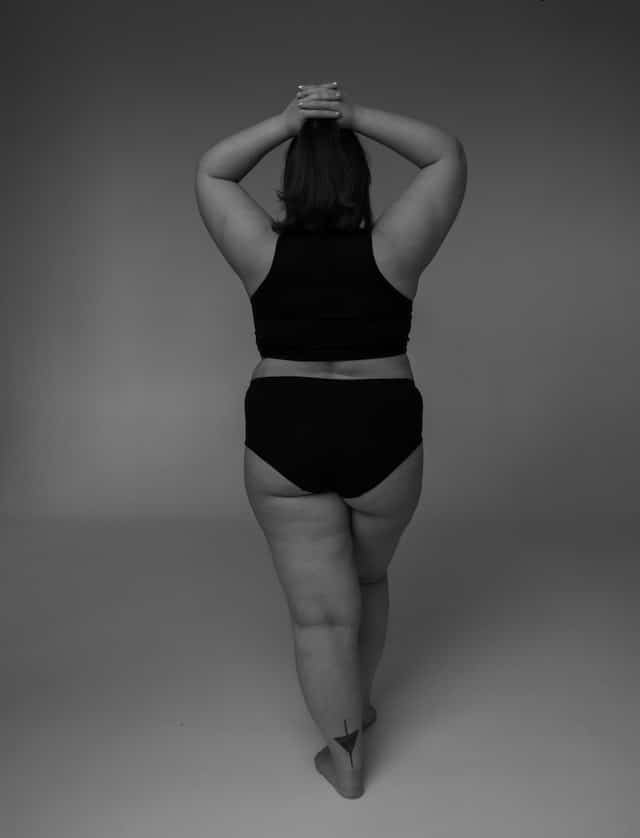Have you ever wondered why women call their panties panties? If so, then you aren’t alone. I’ve often asked myself this question.
Table of Contents
- Briefs
- Thongs
- Cheekies
- G-strings
- Designer knickers
- Compression garments
- Why Are They Called Panties FAQ’s
Briefs
In the UK, female undergarments are commonly called panties. These are usually made of cotton or nylon. They also contain a waistband and a gusset in the crotch. However, other types of undergarments are also available.

Panties come in many different shapes and sizes. They can be made of nylon, latex, cotton, or polyester. Some are even made of lace or mesh. The waistband is normally elasticized, but they are also sold as adhesive or micro-panties.
High briefs are best worn with a high waisted pair of pants. They are designed to provide full coverage. They are usually available in modern colors.
Bikini briefs are similar to boxer briefs. However, they are shorter, allowing more room for movement.
Thongs
Thongs are tiny panties with a thin strip of fabric that bridges the front and rear sections of the garment. They are usually made from a soft textured cotton. There are three main types of thongs. These include the c-string, a triangle connected G-string, and the traditional thong.
These undergarments are popular for their sexy appeal. They can be found in many different styles and sizes. It is important to choose the right type for your body shape.
Thongs are meant to be worn under tight clothing. This makes them great for swimwear. They also come in a wide variety of materials. Many retailers sell men’s thongs, too.
Cheekies
If you’ve been shopping for underwear lately, you might have heard the term cheeky or hipster. They are both synonymous with the same type of underwear: a form-flattering, high-waisted pair of underwear.
Cheekies are usually made from a lightweight cotton fabric. The hipster panty, on the other hand, is made of a less “cheeky” fabric. It has a few inches of height, a low waistline, and elastic seams.

Unlike bikini underwear, the hipster panty will not dig in, even when you sit down. This gives you a great deal of flexibility. You can wear it with jeans, shorts, or skirts.
The hipster’s unique design makes it ideal for women of all ages. It’s a combination of the best features from both a thong and a bikini.
G-strings
G-strings are underwear designed to be invisible to the naked eye. This type of underwear is popular among strippers. They were originally made for African tribes to wear as undergarments. But, they soon found their way to the Western world.
The g-string is a stringy piece of fabric that extends from the hips up to the genitals. Unlike a thong, a g-string doesn’t have a waistband. It also doesn’t have any butt coverage.
G-strings can be worn with leggings for everyday wear. These are also popular with women who like tight clothing. Despite its name, a g-string isn’t for everyone. However, they can be a showy choice for women who want to look their best.
Designer knickers
Women’s panties have come a long way from their humble beginnings in the fifties. While there was a time when knickers were essentially short shorts, the modern day panty has evolved into an ergonomic and comfortable piece of clothing.

Depending on the design of the underwear, it can be used for more than just comfort. It can also be a confidence booster. The right pair of panties can transform any outfit into something that makes you look and feel great.
When it comes to underwear, there are many different styles and fits. There are even underwear brands that have come out with figure-hugging stretch fabrics. These are designed to help support your body, and to make the underwear more moldable.
Compression garments
In medical and athletics, compression garments are a type of bodysuit that is worn to provide support and stabilize underlying tissues. This type of garments is used for many purposes, including post-surgical recovery, body shaping, and sportswear. These garments are usually made of elastic fabrics and contain elastomeric fibers.
These garments can be designed to accommodate a variety of movement types and sizes. The most important consideration in designing compression garments is the application of appropriate pressure. Choosing the proper material can help to increase pressure therapy.
In medical applications, compression garments are generally constructed of durable and moisture-resistant fabrics. They are worn continuously for several hours. Compression garments are also commonly used during intense exercise.
Why Are They Called Panties FAQ’s
What was the original name for panties?
No matter whether it’s a simple strapless bra or the elaborate lacy undergarment Marilyn Monroe revealed while blowing up her skirt in The Seven Year Itch, women’s underwear has always served both an aesthetic and functional purpose. From its introduction in the 1500s until today, women’s underwear has evolved alongside changing beauty standards and social norms.
As early as 5000s BC, cavemen and women donned loose and comfortable loincloths that provided protection to intimate areas. By the 1400s, men began wearing knee breeches known as pantaloons that were tighter and more decorative in fabric and length than their predecessors; eventually these garments evolved into pants in the 19th century. Women’s underwear at this point could be classified as drawers, pantaloons, knickers, smalls or step-ins; this evolved further during pin-up girl era by 1950s which introduced more sexy imagery through balconyette and guette (from French guepierre: wasp) bras but not until 1970s did padded undergarment such as girdles and panties become popular.
Today, underwear is often referred to as either “lingerie” or “pants,” although both terms have interesting histories in both America and Britain. Knickers is an interesting term; its origin lies in a contraction between nicker and sark (referring to short length of garment) which then became the nickname for knee breeches that became fashionable among American men in 1809. Washington Irving’s novel A History of New York included illustrations depicting local politician Dietrich Knickerbocker wearing this style; so much so that his fans still bear his name today in The Knickers (National Basketball Association franchise of New York franchise).
What is panties short for?
Women’s underwear, commonly referred to as panties, is commonly known by this nickname. The word panties is a diminutive of pants meaning little pants; this term can refer to any number of styles for women including boy shorts, hipsters, string bikinis, thongs and panties adorned with lace trim or embroidery; additionally there are various types of lingerie commonly referred to as panties such as garter belts and corsets.
Roman women would wear subligaculum panties that resembled boxers but more feminine; during the Renaissance women shifted towards wearing drawers which appeared like underwear but were actually used as chastity equipment to protect thighs from horseback riding and cover up crotches in case a rider fell off their horse unexpectedly.
Girls and women now wear panties made of various styles and fabrics such as lace, cotton, elastic, latex, nylon, polyester silk rawhide leather. Some are even constructed using cotton blended with spandex for extra stretchiness. There is an assortment of sizes to fit under tights leggings girdles dresses skirts and petticoats.
Pantties provide full coverage and are the ideal undergarment for women looking their best while wearing tight jeggings, trousers or figure-hugging shirts. Pantties offer round and well-sculpted bottom support with more comfort than briefs, thongs and girdles.
When did panties become a word?
Panties has several semi-distinct but interrelated meanings, most often referring to women’s undergarment that sits low on the hips and falls below the knees; sometimes known as drawers, knickers or saucy bloomers depending on your location. More recently however, panties has come to be associated with intimate underwear of all sorts, particularly men wearing thong underwear; today it can even refer to men in similar underwear designs!
Underwear as we know it did not become mainstream until around the 1800s. Before this point, most people did not wear anything underneath their shift dresses (the loose-fitting dresses worn as first layers of clothing by women). When people did start wearing undergarments for warmth or protection against moisture and wind, often just a piece of cloth tied with ribbon secured its position around their genital area.
At first, these undergarments were worn with knee breeches which reached just below the knee. Later on they were replaced by long trousers which often featured a codpiece (named after Latin’coda’ for “crotch”) to protect and support.
Panties date back to the 16th century and were popularly employed in Italian comic theater known as commedia dell’arte from about 16th to mid-18th centuries. A character known as Pantalone in this form of theater was often caught cheating or humiliated by others; his costume consisted of soft brimless hat, pleated black cassock, slippers and red tight-fitting stockings which eventually became fashionable options among both men and women and decorated with laces or bands for decoration.
Why do panties have a little bow?
As you explore any lingerie store’s knicker section, it may become apparent that many pairs feature pretty ribbon bows attached to their centre front. Although often taken for granted, this feature shouldn’t just be dismissed as simple decoration – Reddit users have recently discussed whether this bow/ribbon tie may actually serve a practical purpose at some point in history.
A forum user explained that in pre-elastic days when panties weren’t elasticized, a ribbon had to be used to tighten them – and tied in a bow at the front; some pairs of knickers still feature this characteristic today. It may have also helped women figure out which way their knickers should face when getting up early to take care of household tasks or manage domestic responsibilities in darkness before dawn.
Evidently, bows have remained popular even though elastic is now the standard due to their innocent, cute, feminine qualities and appeal to male gaze. Furthermore, bows attract men’s gaze which draws male attention; therefore you will often see this feature featured in lingerie products and is believed to lead to increased desire between wearer and partner; whether or not this explanation holds up, it certainly offers an interesting explanation!
Who invented panties?
Undergarment is one of the cornerstones of any outfit and arguably its most diverse component, boasting colors and styles to suit every personality imaginable – from granny pants a la Bridget Jones to hipster briefs or risque thong and g-string, today’s underwear market is flourishing!
Questioning who invented panties is certainly fascinating. From loin cloths to bras and pantyhoses, undergarment has come a long way since its first invention. Yet fashion was not always at the forefront of underwear development over time.
As an example, the first printed underwear ads appeared in the 1910s and emphasized durability and comfort over style. At this point in history, however, women and men began changing their undergarments; during the flapper era women abandoning corsets in favor of bloomers (more feminine versions of men’s loose trousers). Bloomers helped pave the way for brassieres as welcome additions to women’s wardrobes.
Nylon made stockings more accessible, affordable, and accessible to a wider range of people after its introduction in 1868. By 1930s’ first bra cup sizes A to E were established as crucial milestones of women’s liberation.
In 1949, American tennis player Gertrude Morn caused a sensation by wearing frilly panties during Wimbledon matches. Later on in the 80s came another underwear innovation called a thong that would fit seamlessly with aerobics culture at that time.
Related content:

